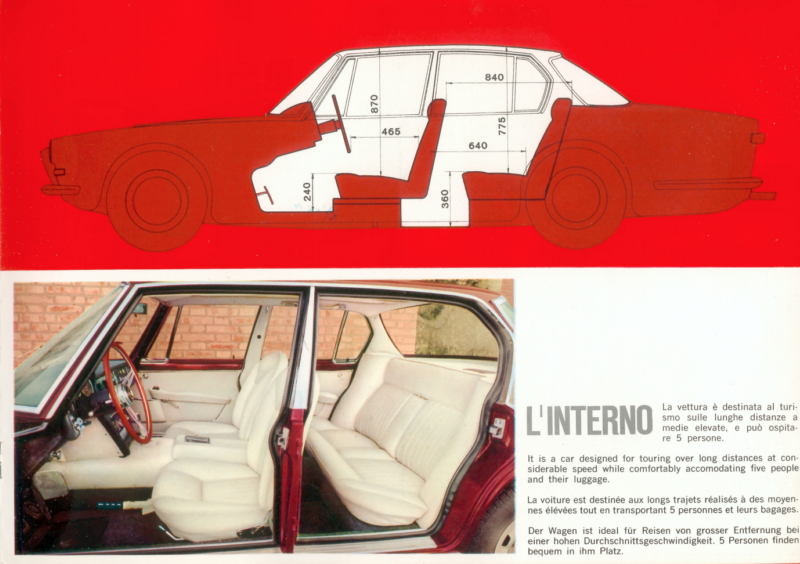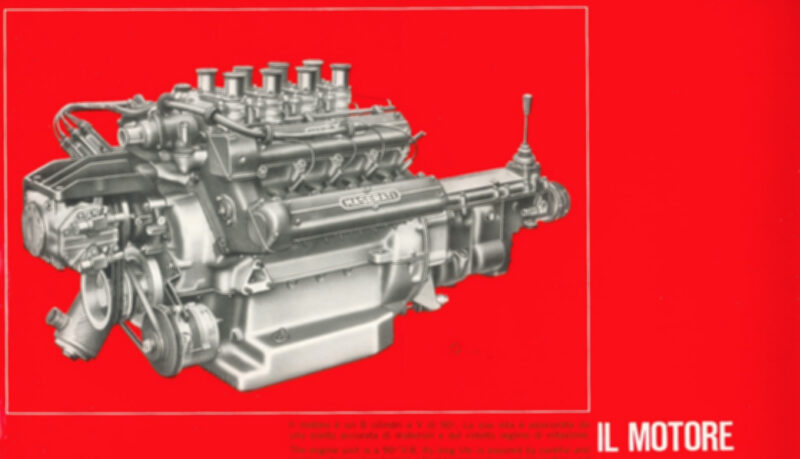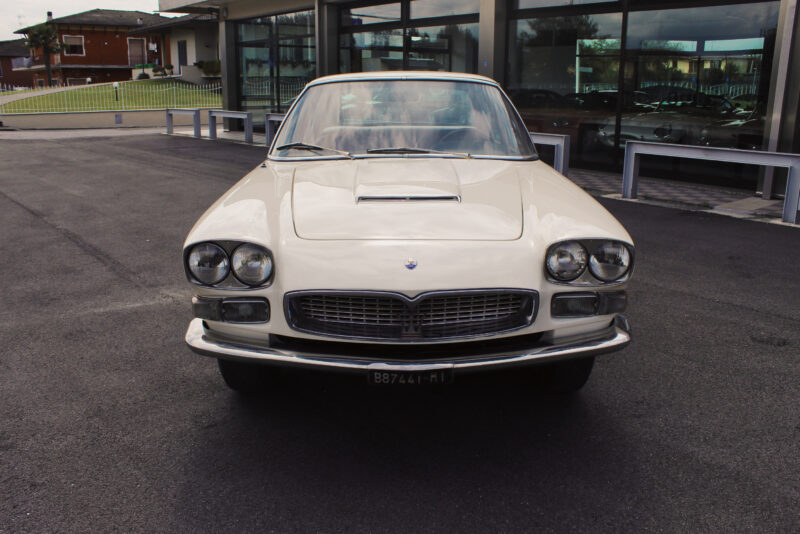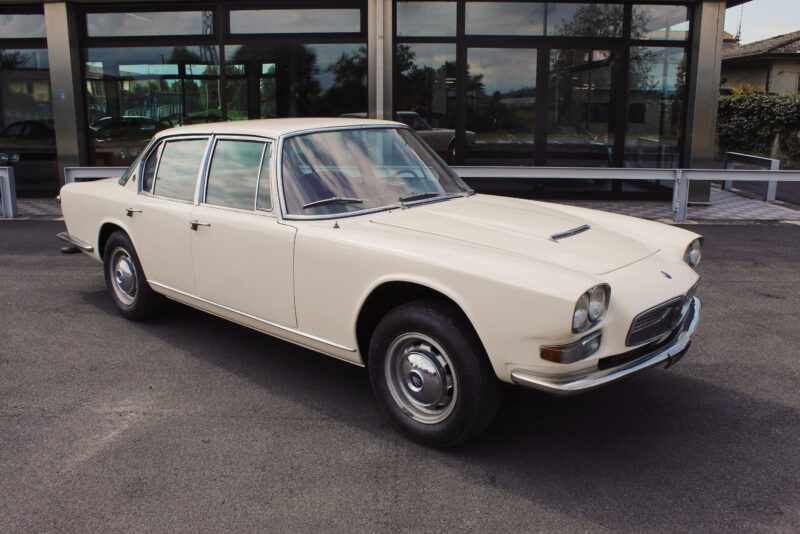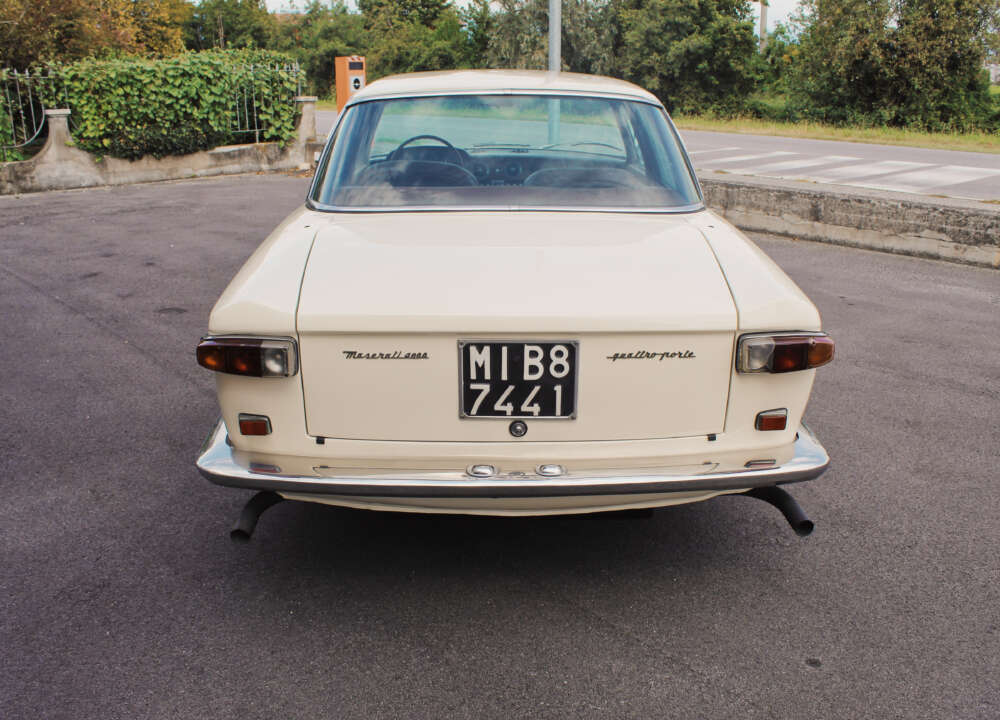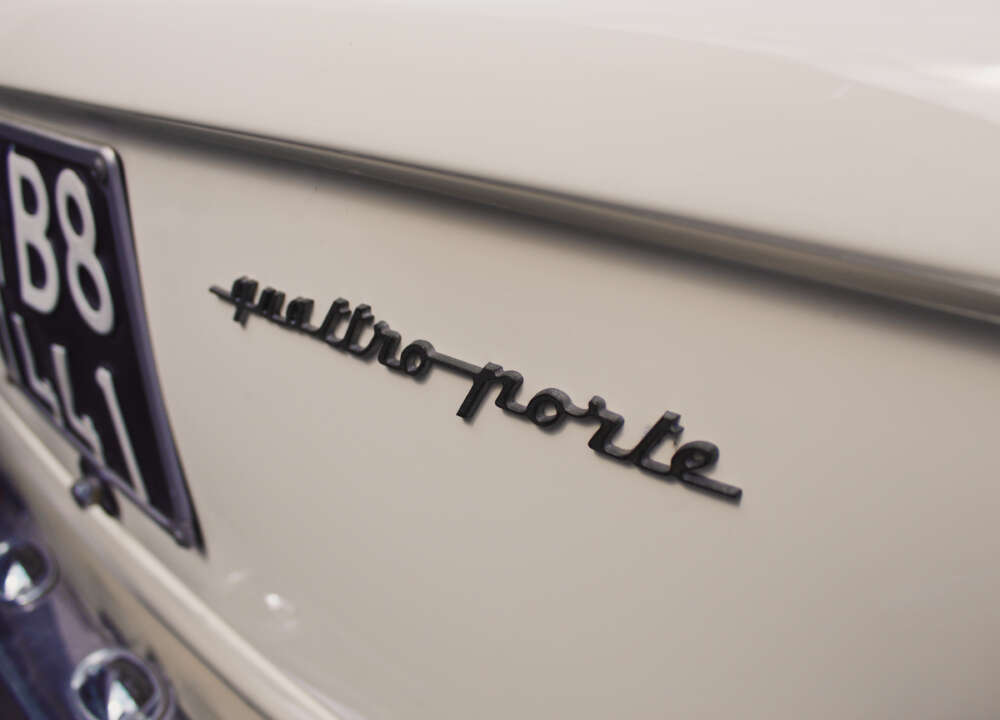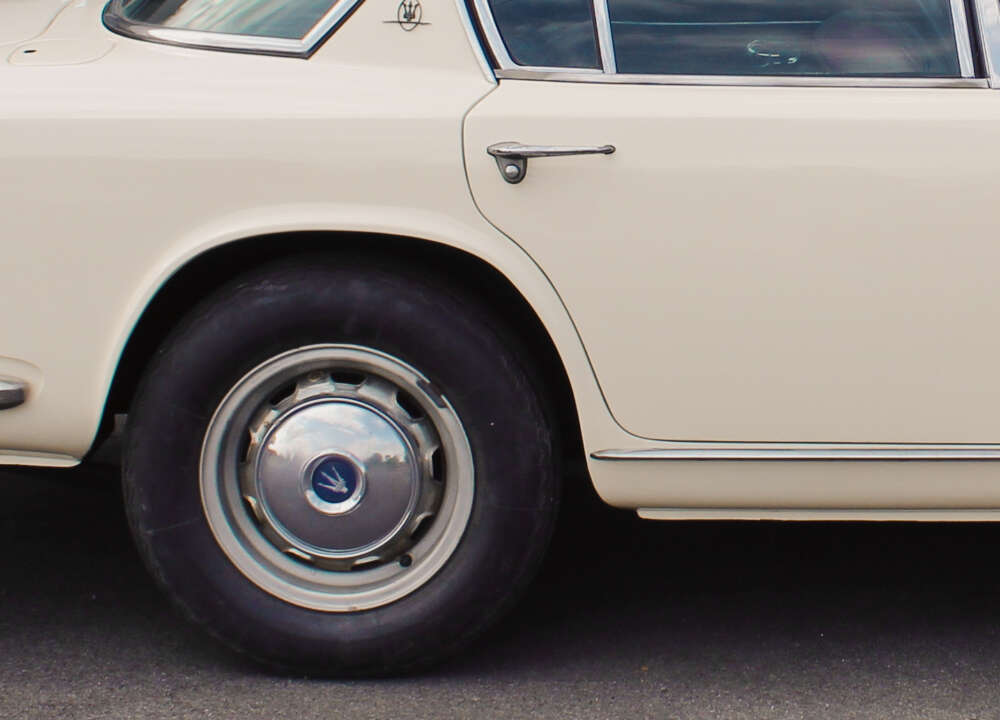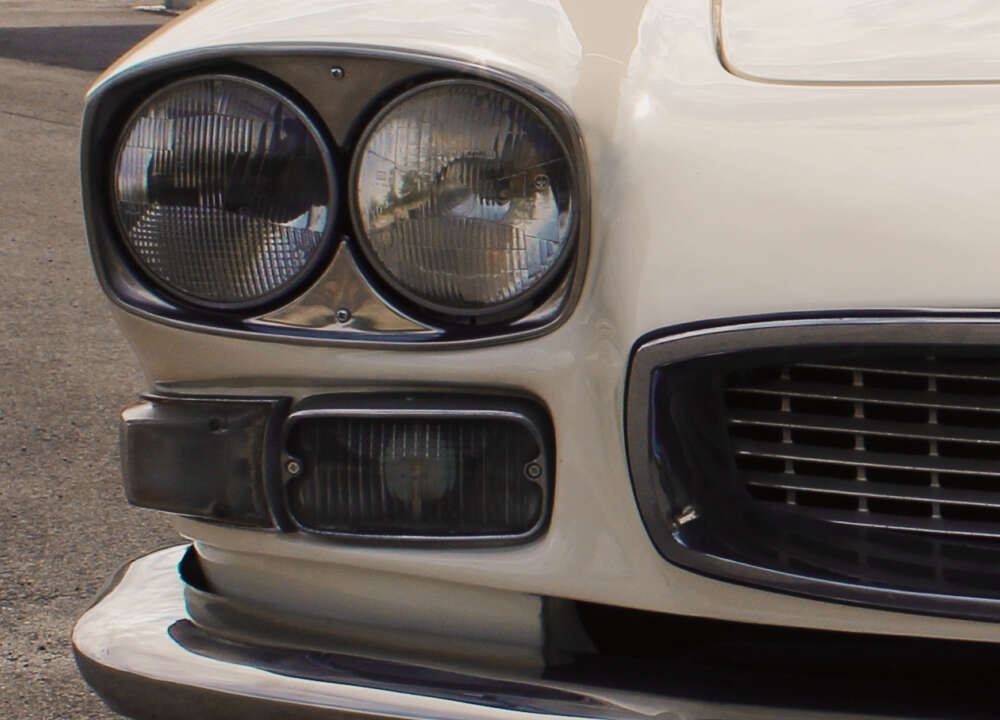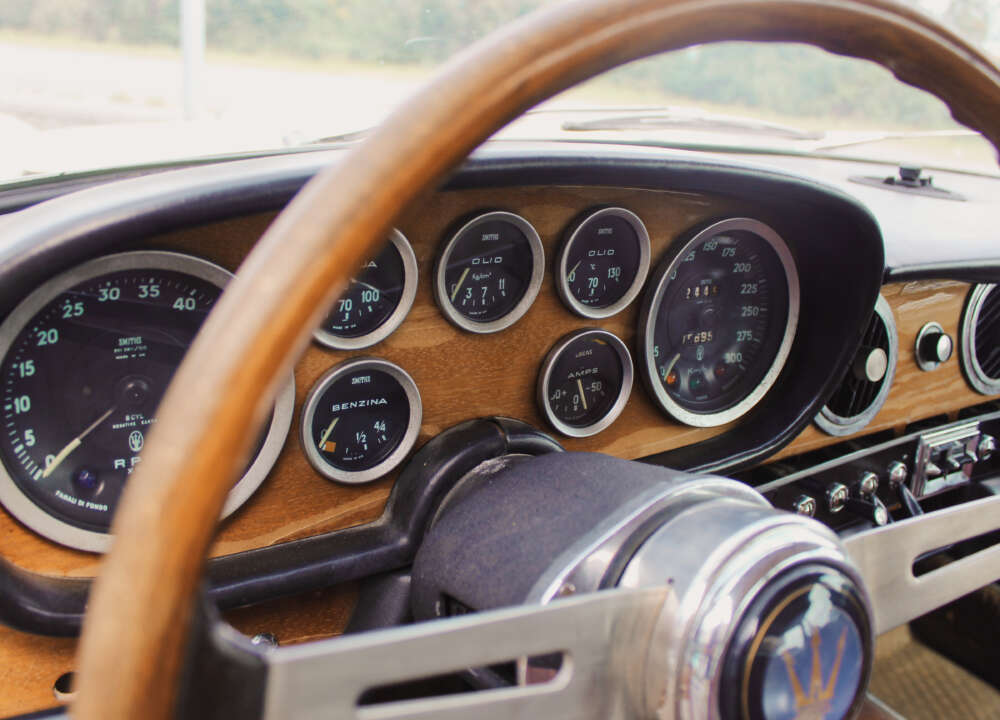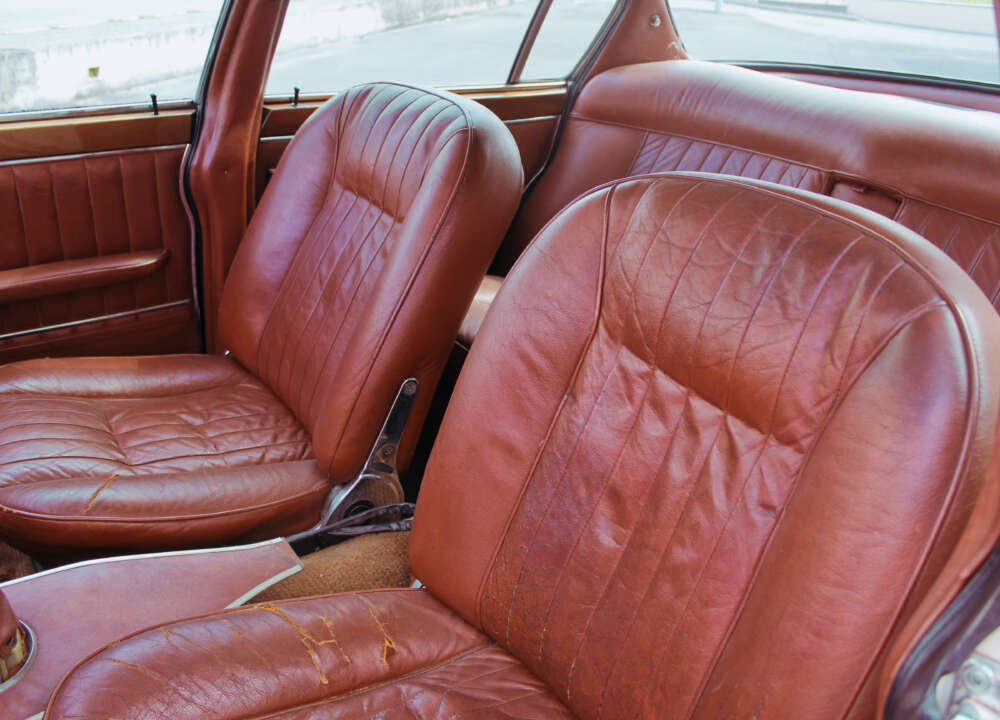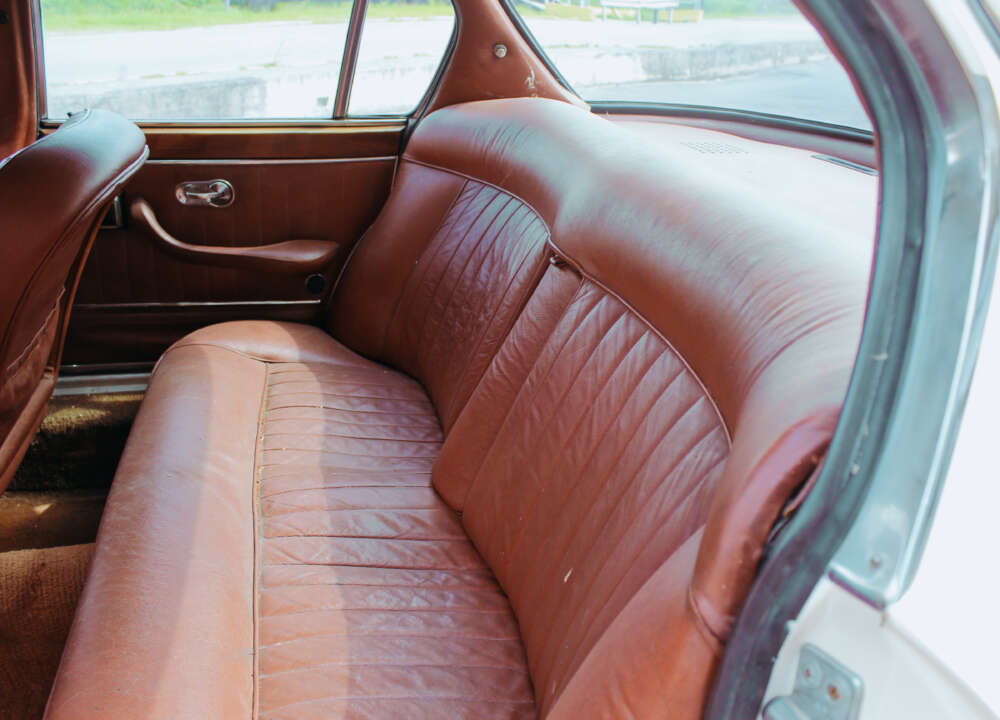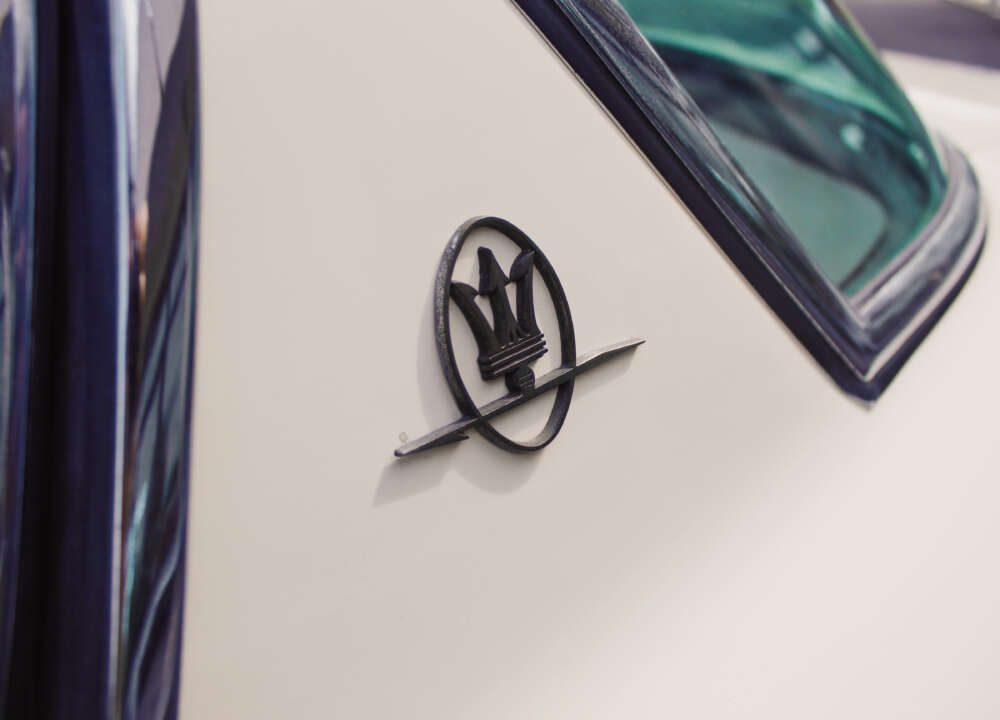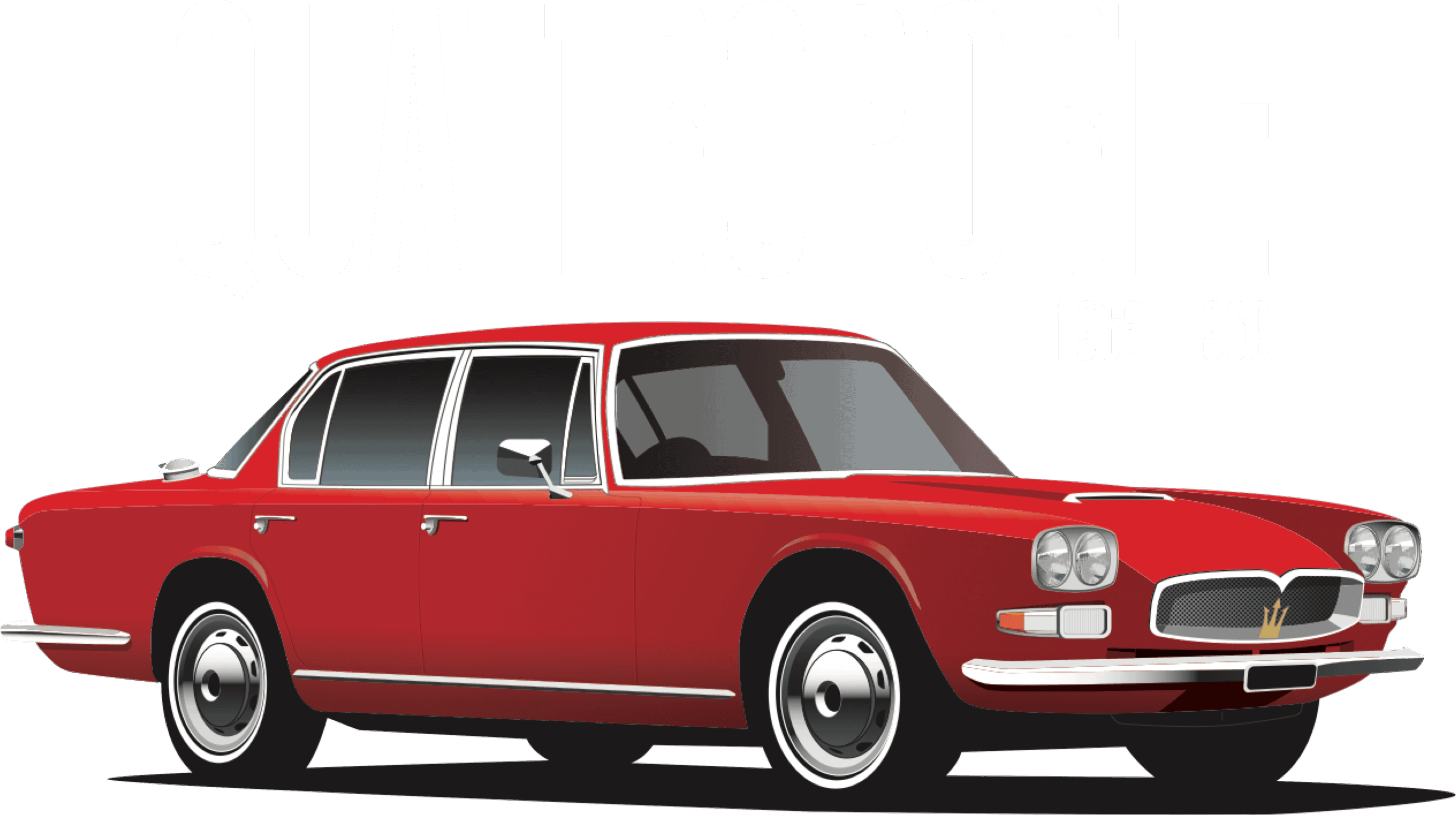
The first high-performance saloon car, a significant trendsetter
The Quattroporte was a brave new world for the firm of Viale Ciro Menotti. Adolfo and Omar Orsi, knowing their 3500GT was a success, wanted to consolidate their footprint on the fast road car market by widening their range. Along with chief engineer Giulio Alfieri, they had reviewed what new directions they could explore for a new model. It became apparent that a high-performance four-door was the answer. There just weren't any apart from what Jaguar and Mercedes offered. Offering a car with four doors, a seriously powerful engine and proper handling with the required comfort was the doorway to a new untapped market.
The decision to implement this project was taken in 1961, and the Quattroporte was introduced in 1963 at the Turin show. Its designation was type 107.
For the engine, a V8 was chosen for several reasons. An inline-six would have been limited, particularly in torque faced with a heavier car. Secondly, the US market was to be a key target for this model, and a V8 would be an asset there. Thirdly it was time for some innovation and more power due to the market's ever-increasing thirst for it.
So the most important engine in Maserati history was born, one of the most legendary in automotive history: the first and long-lasting production Maserati V8. It would be used in the Mexico, it would star in the Ghibli all the way to the mid-engine Bora, the Khamsin and the Kyalami as well as the Quattroporte III in the early eighties.
This was a new 4163cc 260hp version of the competition 450S based engine though it differed a lot from that used in the 5000GT in more ways than just the capacity. The QP1 engine has similarities to the later 5000 (Tipo 151) engine, but there are still very few common parts. To drive the camshafts chains replaced gears, which would have been too noisy for road cars, and Weber carburettors were used on all QP 1s. A standard oil sump was chosen.
There were three distinct V8 engines to get to the point of QP1. Also, as the years went by the engine was continually developed.
The chassis was also a major innovation for the Modenese firm. In place of the traditional tube-frame chassis, the monocoque principle was chosen with the whole body structure providing rigidity aided by some cross members. This involved a lot of welding, but the end result was significant progress over what had been an ancient production method.
They used a De Dion rear suspension at first because it combined the advantages of independent suspension and a solid axle. Ermanno Cozza declares that a Swiss customer was regularly driving his car (the third delivered, in July 1964), on cobblestones which created noise from the rear suspension. He was complaining, so they installed rubber mounts in prototype 107.004, but this didn't cure the problem, it was still too loud. Then they introduced the 3500 GT solid rear axle, and the noise at 50 km/h dropped from 87 Phon to about 58!
That did not keep them from building the rest of the 260 cars of the first series with the (loud) De Dion suspension. In summer of 1966, they finally changed the series production to a Salisbury axle. The assumption is that they had ordered at the supplier a batch of 250 necessary pieces for the De Dion production plus the required amount of spares. They did not want them to go to waste and make a loss.
A Watts linkage ensured precise handling. Disc brakes were by Girling with the rears being inboard but only on the first series (first 260 cars). Afterwards, with a solid rear Salisbury axle, this was not possible anymore. They installed regular ventilated discs.
A ZF five-speed was standard, and from November 1965 (not from the beginning) an option was an automatic transmission by Borg-Warner. Clients could choose between four different axle ratios from 3-31 all the way to 4-09.
From 1966, the automatic gearbox became a proper option in the second series, together with power steering (by ZF, like the 5-speed gearbox).
For the body styling, Pietro Frua was chosen based on his successful 5000GT designs. The same design philosophy was applied but in a more everyday way without risqué styling touches which would also have been a headache to deal with in large number production. It was evident that such a car, clearly aimed at CEO's and businessmen had to be mature and discreet in appearance. The first version is recognizable by the rectangular headlights. Four round headlights could be ordered, for the first series, either for personal taste or for legislation (USA) reasons. To confirm: the first series had rectangular or double headlights.
The all-leather interior was a beautifully appointed cocoon with electric windows and optional air conditioning. A cavernous trunk provided ample space for Sir, Madame and the little ones to depart on an extended vacation. All in all, it exuded tasteful subdued sophistication.
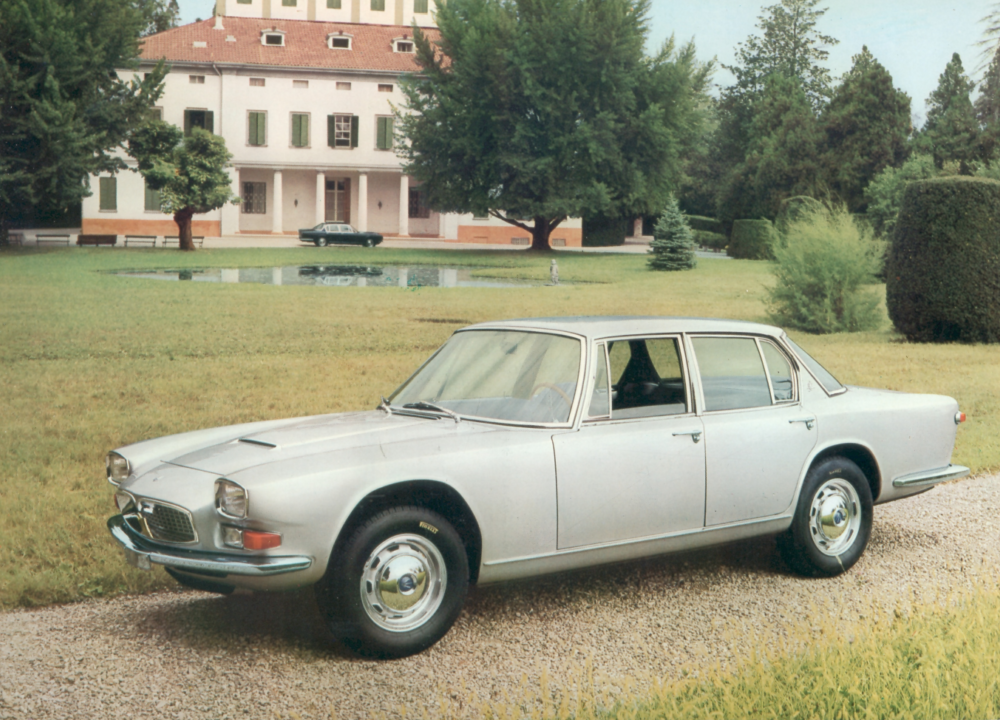
The second series was introduced in summer 1966. There was no 1963 production (only 2 prototypes, probably hand made by Frua himself, as Vignale didn't want the job at first). Body production at Vignale only started in mid/autumn 1964.
All of the second series have double headlights, not rectangular ones. The suspension "upgrades" which was, from a technical point of view, a downgrade, was a transformation from De Dion to a cheaper rigid Salisbury axle. The 4,7-litre engine was officially only available from 1968 but homologated earlier (announced for the Turin motor show in autumn). The factory claimed it was in demand from the USA – albeit that was wishful thinking, as most of the production stayed in Italy (ca 50 to 70%). Only about two dozens or even fewer cars were imported new to the USA. The Aga Khan and some other fortunate customers were allowed to have a 4,7-litre engine at an earlier date, but it was not in the price lists before late 1968. They also had improved more luxurious dashboards with more wood, which was added to the doors as well and standard air conditioning, as opposed to optional before. At the wooden wheel, it is very comfortable, handles better than any four-door of that era and still very competently compared to today's offerings. It provides enjoyable driving and serious performance: an elegant salon on wheels, a TGV of its day.
Specifications
There were some small differences beyond what was covered above: the first prototype had different wheels and door handles. The interior was different too, specifically the dashboard. It featured a large central speedometer (probably to impress the passenger). Which is proof that they didn't think of offering an A/C at first. The speedometer was where an A/C would have to be. But it seems there was customers' demand for A/C. So they reconfigured the dashboard and placed the speedo in front of the driver, a more conventional place. This allowed installing an A/C in the centre. Many first series cars were already equipped with A/C.
The introduction of the monocoque bodyshell had another consequence: the car could no longer be rebodied by individual Carrozzerie. Since the beginning of the 20th century, they used to remove a body from a ladder chassis and fit their own design onto it. This was a watershed moment but of the negative kind alas as progress began cancelling out bespoke limited production bodies which were no longer practical to produce at a realistic cost. Checkmate. This is why the two - or rumoured three - Quattroporte II's by Frua are not counted here. Contrary to what some books state erroneously Pietro Frua had to use Indy chassis to produce them as confirmed definitely by Andy Heywood of McGraths Maserati.
Famous owners included Soviet leader Leonid Brezhnev, Prince Rainier of Monaco, Karim Aga Khan, star actors Marcello Mastroianni, Alberto Sordi, Peter Ustinov. The Aga Khan had several ones, he even gave one away as a present to his mother. Ustinov, who was a real petrol head (Gerhard Reinecke, keeper of the registry often met him at the Geneva Motor Show Press days), had at least two, his favourite cars ever. Mastroianni owned two as well. Sometimes facts are simply beyond credible fiction.
QPI's did see fair use in movies, their main role came in the Italian: La Polizia è al Servizio del Cittadino? (1973) thankfully for the car's final scene, a collision with a train (!) it was replaced by a more pedestrian saloon. Alas in Il magnate (1974) not one but two QPI's were damaged in staged collisions. Interestingly they were also used in high-speed chases in several German movies and TV series: Küß mich, Monster (1969), Der Kommissar (Ep 15 1969-76) which indeed must have prodded the pride of that country's manufacturers and motivated them to respond with the production of their own fast saloons.
762 cars built between 1963 - 1969.
First series: 251 cars were built with 4.2 engine, 8 with 4.7 engine.
Second series: 435 cars with 4.2, 73 with 4.7 and 3 with 4.9 engine
About the 3 cars with 4.9 engine: the general belief is that these cars were born as 4.7 and later received a 4.9 engine, like the QP1 of the Aga Khan with chassis number 2434.
Engine
V8, light-alloy block
4136 cc, 4719 cc for Quattroporte 4700
Power output: 260 hp; 290 hp for Quattroporte 4700
Body
Four-door saloon, monocoque body shell
Designed by Frua, built by Vignale
Performance
230 kph; 255 kph
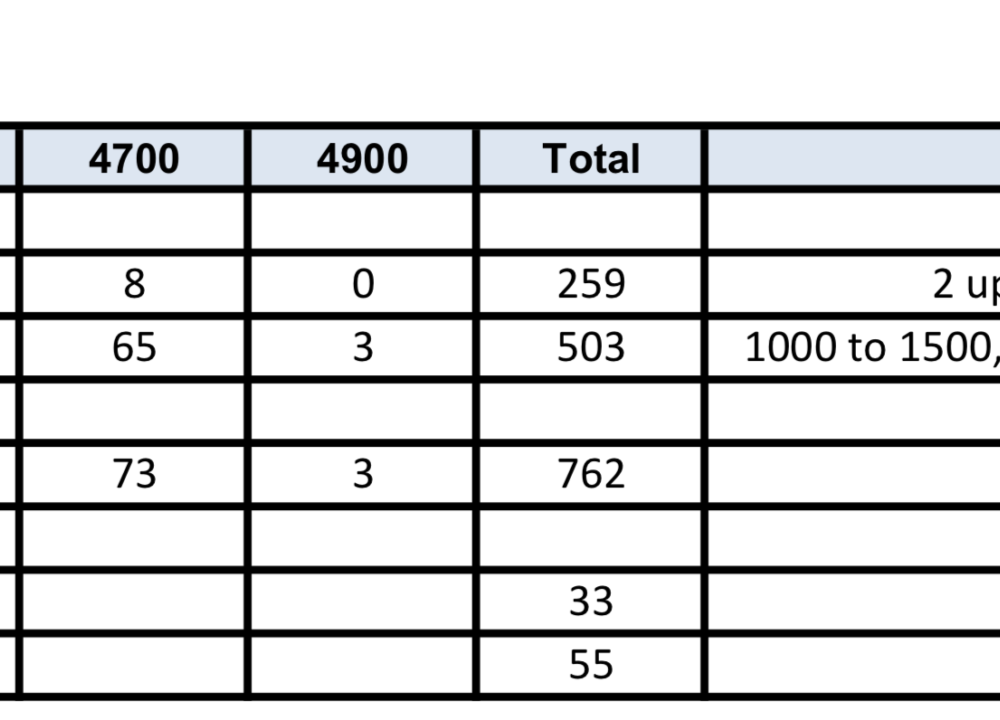
Competitors
Obviously, the main competition for the Berlina Modenese was Jaguar and Mercedes. Jaguar offered two models during that era. Firstly the Mark X made from 1961 to 1970 which did have similar power by way of its various inline-six engines. These ranged from 3,8 to 4,2 and produced 250 to 265hp with manual, manual with overdrive or automatic transmissions. However they were enormous, more meant for the American market, and their road-holding and brakes left a lot to be desired. It was clearly made for stately progress with a chauffeur. The Mark 2, produced from 1959 to 1967, was more in line with the Quattroporte being more compact and agile. It was the bank robber's favourite in reality and the movies. Engines were 2,5 to 3,8-litre with power from a paltry 120hp to 220 but most produced 190hp. Their top speed barely reached 200kph downhill downwind though. Just about 100.000 of the various versions were made. Mercedes made multiple versions of the 220 between 1959 and 1968, such as the 220S used in the James Bond "On her majesty's secret service" (1969) chasing 007 but that was underpowered, and over 300.000 were made. It is the 3-litre 300SE that was the real potential rival. These were even raced, but its fuel-injected inline-6 only produced 160 to 190hp. 6748 were built including long-wheelbase versions. In typical Mercedes fashion they were very efficient appliances, even had air suspension but zero charm.
Valuation
They do not show up for auction very often. In the 2016-17 auction season, just three were offered of which two sold. One for 61.600 Euros at the November 2016 Milan RM Duemila Ruote auction and one for 63.250 Euros at the Bonhams Spa Belgium auction in May 2017. In the 2017-18 season, just one was offered at a Milan Bolaffi
May 2018 auction but did not sell. In February 2020, the far less reliable advertised asking prices range from 27.000 Euros for a project to 130.000 for a restored car. However, it is pricing with great inconsistencies as some projects are for 48.000 Euros. The price bracket for a good to a very good car should be between 80 and 100.000 Euros.
We are aware that the valuation of this car is very subjective and depends on many criteria. That is why auctions are used as a barometer to sense where the market is moving. However, premium restored or preserved classic Maseratis change ownership through private sales (and seldom in an auction). As a result, rarely do we discover the price for an off-market transaction.
Persuasion
Clearly, the Jaguar Mark 2 and the Mercedes are not from the same world as the QPI of which 762 were built. Their performance was not at the level of their Italian role model. While these marques would eventually reach the power and handling levels of later Quattroportes, they were at a painful disadvantage back then. Modena had caught Stuttgart and Coventry with their pants down.
Compared to other classic Maseratis, the QPI is ideal for the enthusiast who wants a vintage model yet has a family. Madame won't be able to object to insufficient room or luggage capacity. Compared to another luxury upper-performance level saloons its build quality, refinement, charisma and rarity make it an obvious choice. The cherry on the cake is the beautiful ease of use of the torquey low revving glamorous sounding V8 motor.
Initial texts by Marc Sonnery.
Redacted by Gerhard Reinecke, registry keeper of tipo107.com
Production data provided in September 2020 by Giovanni Verzoletto, Maserati enthusiast and car owner and Fabio Collina, Head of Maserati Classiche.
Registry
The Quattroporte Registry is publicly available at http://www.tipo107.com/ . The registry keeper is Gerhard Reinecke. You can have information added or updated through him. He is also reachable on Facebook.

